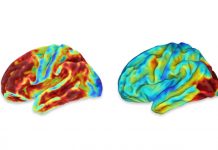A major contribution of this study is the transition from a cross-sectional understanding of AD subtypes to the perspective brought by longitudinal clustering. Some of the previously reported AD subtypes seem to reflect different stages of the disease that can be observed in our five estimated longitudinal atrophy patterns. Hence, our data contribute a step towards solving the long-lasting problem of disentangling disease stages from actual disease subtypes. This was enabled by modeling longitudinal data using a clear timescale, i.e., over eight years, from disease onset in a large multiethnic cohort of 891 AD dementia cases from four continents. Another important finding is that AD subtypes with clearly distinct atrophy trajectories may converge in late disease stages. This introduces a new understanding of neurodegeneration in AD, which combined with knowledge of neuropathological…
Home Alzheimer's Research Multi-cohort and longitudinal Bayesian clustering study of stage and subtype in Alzheimer’s...


























